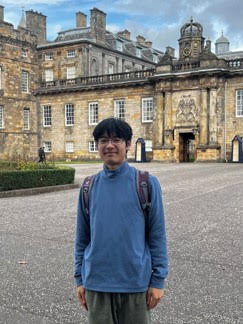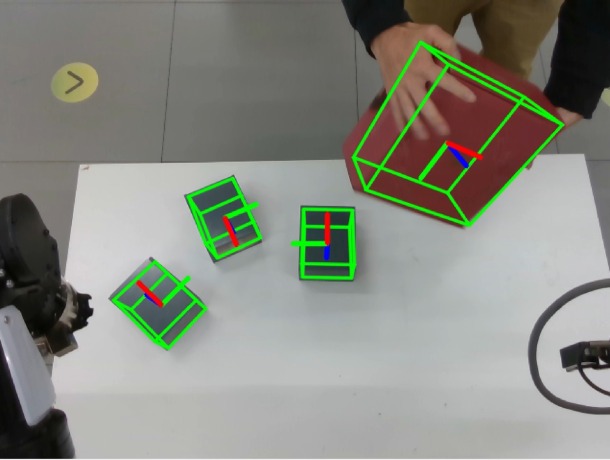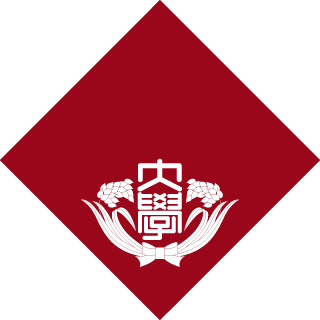- Study abroad
- Fujita Sachiya
Fujita Sachiya

- Posted
- 2024年11月29日(金)
Fujita Sachiya | 1st year master’s student, School of Creative Science and Engineering
- Visiting period: Aug. 2024 to Nov 2024
- Visiting university: Edinburgh University
- Visiting country and region: Edinburgh, UK
Background of the Overseas Program
The research group I belong to is part of the Cabinet Office’s MOONSHOT project, which also includes Seth Laboratory at Edinburgh University where I studied abroad. In February last year, I was invited by my lab to participate in a study abroad program to assist with the MOONSHOT project at Sethu Lab. As a result, I had the opportunity to study at Edinbrugh Univ. from Aug. 20th to Nov. 22nd.
I have been conducting research on robot motion generation using AI. For my undergraduate thesis, I worked on using a humanoid robot named Dry-AIREC to hang a suit on a hanger. This experience led me to work on motion generation research using the same humanoid robot, NEXTAGE, at the host lab. during my study abroad.
Before the program started, I prepared in advance by exploring potential AI models that could be used during my research there. Thanks to this preparation, I was able to carry out my research smoothly during my stay.
Research Content and Achievements
During my study abroad, I conducted research on integrating logistics tasks using humanoid robot NEXTAGE. The background of this research lies in the growing automation of logistics operations, such as transporting and loading goods. For these tasks, understanding the contents of a package is critical, but it is not always possible to determine the contents from the package’s appearance. Therefore, it is necessary to dynamically perceive the properties of the contents and use that information to plan transport and loading actions.
Based on this, I worked on a task where the robot had to handle multiple packages (boxes) with unknown contents. The goal was to actively perceive the properties of the contents—such as weight and stability—and perform a sequence of actions: transporting and stacking the boxes according to these properties. Specifically, the robot used the stick on its left hand to push the box and assess its stability, while the right hand lifted the box to perceive its weight. Afterward, the robot transported the box while avoiding moving obstacles and finally stacked the boxes, ensuring the heavier and more stable ones were at the bottom.
My contribution focused on image processing, specifically implementing the detection and estimation of the position and rotation of the boxes and obstacles. This information was essential for grasping the boxes and transporting them while avoiding obstacles. To achieve markerless detection of this data, I implemented a system combining two neural network models, Segment Anything2 and FoundationPose. This work was demonstrated during the midterm presentation of the MOONSHOT project in early November and has been shared on the GitHub repository managed by the host research lab to facilitate its use in future studies.

Fig.1 Experimental scene.

Fig.2 Obtaining 6D pose (translation & rotation)
Campus Environment
I conducted my research in a lab located in the Bays Center building at Edinbrugh University. This building houses various research labs focused on information and robotics. The lab was on the first floor, while the offices for individual research groups were on the upper floors.
One notable feature of the lab and the center was its open and welcoming atmosphere. The center had an atrium that extended to the top floor, and the office walls were made of glass, allowing a clear view from the hallways. This design created a sense of openness throughout the building. It seemed to be a thoughtful approach to maximizing sunlight, especially during the short daylight hours in winter. Perhaps influenced by this physical openness, I often felt a similar sense of mental openness from the lab members as well.
A memorable example of this was during lunchtime, when people from different offices naturally gathered in the shared break area to enjoy meals and chat. Participating in these informal gatherings gave me a surprising sense of relaxation and openness as well.
Since I tend to have a rather impatient personality, I was used to working nonstop all day back in Japan. However, this experience made me realize that taking proper breaks and maintaining a relaxed mindset might actually be a more effective way to achieve research outcomes. It was a valuable opportunity to rethink my approach to work.

Fig.3 The front entrance of Bays Center. The lab where I worked can be seen in the back.

Fig.4 Inside the lab. Various robots were used, including robotic arms, humanoid robots, and mobile robots.
International Exchange
Here, I will talk about communication in English. The lab included members from various countries such as Portugal, Greece, India, and China, giving me daily exposure to diverse accents and styles of English. Before studying abroad, I practiced listening to British radio, but I had few opportunities to hear non-native English. As a result, I often struggled to understand even familiar words due to different accents and intonations.
Fortunately, during research discussions, I could often guess the meaning from technical terms, and others were considerate enough to speak more slowly or pause between sentences, making it easier to follow. Over time, I was able to better understand conversations and respond appropriately, which gave me a sense of improvement.
On the other hand, daily conversations were more challenging due to the use of casual expressions and faster speaking speeds. I sometimes lost context of the conversation or had to ask people to repeat themselves, especially when they asked me directly. However, thanks to the open-minded nature of Edinburgh’s multicultural community, not only in the lab but also in the city, I found that simply saying “I don’t understand” usually led to kind responses. This experience not only showed me the kindness and tolerance of the people in Edinburgh but also taught me the importance of speaking up and admitting when I don’t understand something.

Fig.5 Photo with my lab members.
Housing
Here, I will talk about my accommodation. During my study abroad, I stayed in a flat (apartment) about a 30-minute walk from the university. Edinburgh has many old buildings to preserve its historical landscape, and the flat I stayed in was also an older building. However, it was well-equipped to handle the harsh winter cold, with heating in the shower room and double-glazed windows, making it comfortable to live in even during the winter season.
Surroundings
Here, I will describe the cityscape of Edinburgh. As Scotland’s second-largest city, Edinburgh is famous for many historical landmarks, such as Edinburgh Castle and the Palace of Holyroodhouse. The city still retains a strong medieval atmosphere, with its historic streetscapes preserved to this day. This charm extends even to residential areas outside the city center, where many flats feature brick exteriors with historic designs.
However, this beautiful scenery can also make it easy to lose your sense of direction. The buildings look very similar, making landmarks hard to identify, and the city has many complex intersections like three- and five-way junctions, making straightforward navigation difficult. As a result, if you try to rely only on your sense of direction instead of a map, it’s easy to end up heading in a completely wrong direction without realizing it. For me, the first one or two weeks after arriving at Edinburgh were particularly challenging. Every time I tried to take the same route back to my flat from the university, I would almost always get lost, which remains a bittersweet memory.

Fig.6 Edinburgh Castle, the symbol of Edinburgh.
Local Culture
I’ll talk about the traditions and culture of Scotland in this section. Living in Edinburgh, I could sense how much Scottish people value their own culture and traditions in everyday life. One particular experience that stood out to me was a conversation with my flat host, who encouraged me to use the Scottish terms “ben” for mountain and “loch” for lake instead of the usual English words. This made me realize how strongly Scots cherish their unique language and expressions.
I also noticed people wearing traditional Scottish clothes and playing the bagpipes, even in non-tourist areas. This showed me that their traditions are not just performances for tourists but are deeply rooted in daily life. It became clear that Scottish people take great pride in their culture and actively express it in their everyday activities.
This emphasis on preserving and showcasing cultural traditions as part of everyday life, not just as a tourist attraction, is something that could serve as a valuable reference for Japan, which also focuses heavily on its tourism industry.

Fig.7 A bagpipe player performing regularly in the city center. As a side note, the chime sound of the University of Edinburgh’s siren is based on the sound of bagpipes.

Fig.8 A view of Loch Ness. Located in northern Scotland, its English name is written as “Loch Ness.”
Next, I’ll talk about the national character of Scotland. Walking through the streets of Edinburgh, I couldn’t help but notice the flags displayed on many buildings. While the flags of the UK and Scotland were present, what stood out even more were the many flags of Ukraine and Palestine, which countries is ongoing conflicts. These flags were especially prominent on highly public buildings like the parliament and museums, reflecting the strong public awareness and concern about these wars.
Living in Japan, including myself, it’s tend to view these conflicts as distant issues. However, in Edinburgh, the proximity to these countries and the presence of a diverse population seemed to foster a higher level of interest in and awareness of such conflicts. Seeing these flags made me wonder if displaying flags in Japan could serve as a way to encourage individuals to take an interest in wars affecting other nations.
At the same time, I couldn’t help but hope for a future where these wars come to an end and the flags of Ukraine and Palestine are replaced by the UK or Scotland’s flags, as they were likely originally intended to be.

Fig.9 A bridge illuminated in blue and yellow. Could it be matching the colors of the Ukrainian flag?
Future Goals
During my study abroad, I spent more time on implementation work for demonstrations rather than research itself. I didn’t do what is typically considered research, but I did gain valuable experience in building systems from scratch in a new environment and combining them with existing systems. I believe this experience will be very helpful for my future research. Since I have more opportunities to do demonstrations related to MOONSHOT project, I would like to make full use of the implementation skills I gained during my study abroad.
Additionally, by interacting with researchers from various backgrounds, I was able to broaden my knowledge, including in areas outside my field. At the same time, I realized how rigid my own thinking had been. I am not sure when I will have the chance to do research abroad again, but even while I am in Japan, I want to actively build relationships with people from other countries and make efforts to broaden my perspective, so that I don’t become narrow-minded.
Conclusion
I would like to express my sincere gratitude to Professor Sugano, Professor Ogata, and everyone in the laboratory who supported my study abroad, to the staff at Waseda ICT and Robotics who assisted with financial and administrative matters, and to my parents who encouraged me throughout this studying abroad. With this experience as a foundation, I am determined to dedicate myself even more to my research and contribute to the field of robotics and AI.
